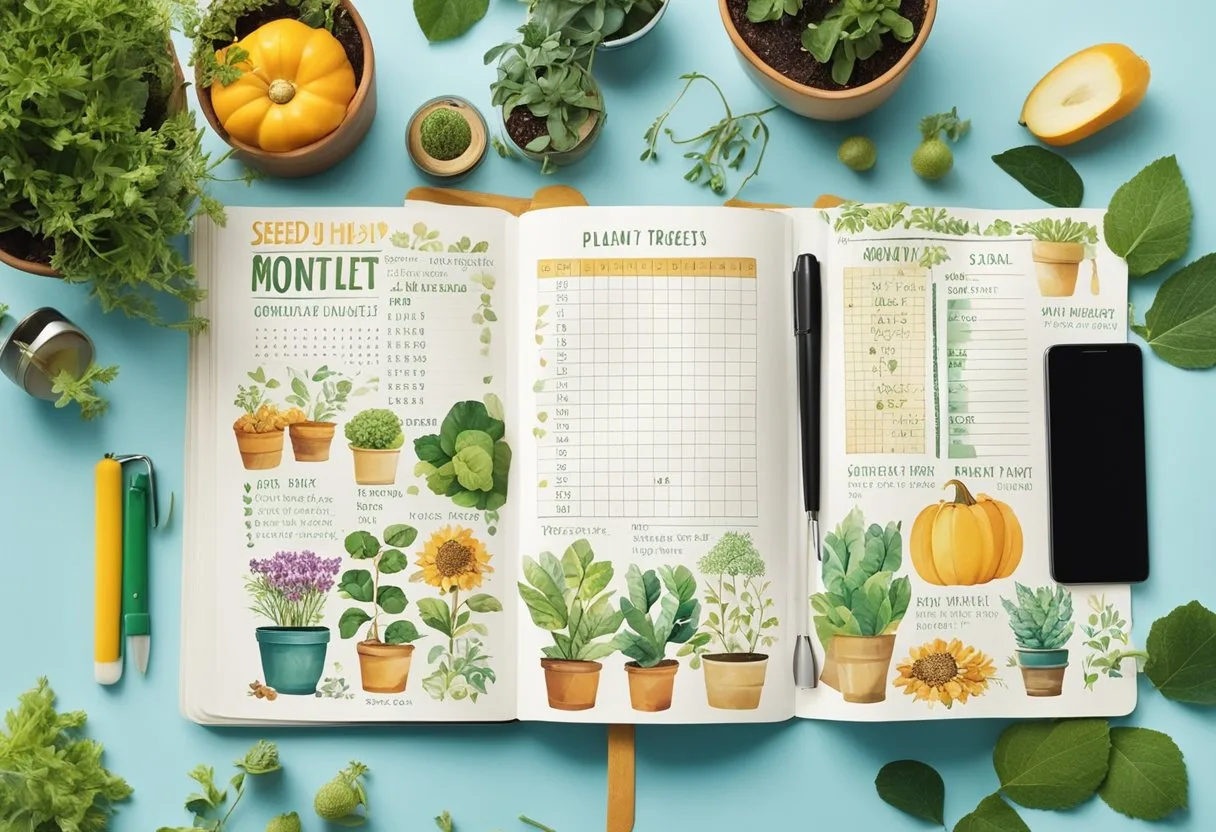Bullet journaling is an organizational system that has become increasingly popular in recent years, especially among those with ADHD. The system, which involves using a blank notebook to create personalized layouts for tasks, goals, and notes, has been praised for its flexibility and effectiveness in helping people with ADHD manage their daily lives.
One of the biggest benefits of bullet journaling for those with ADHD is the ability to customize the system to fit their unique needs and preferences. This can include using different symbols or colors to denote different types of tasks, creating specific layouts for daily or weekly planning, and even incorporating mindfulness or self-care practices into the journal. By tailoring the system to their individual needs, people with ADHD can improve their focus, productivity, and overall well-being.
While bullet journaling can be a helpful tool for managing ADHD symptoms, it is important to note that it is not a cure-all. The system requires consistent effort and dedication to maintain, and it may not work for everyone. However, for those who are willing to give it a try, bullet journaling can be a valuable addition to their ADHD management toolkit.
Understanding ADHD and Bullet Journaling
The ADHD Brain and Organization
Individuals with ADHD often struggle with organization due to the way their brain functions. The ADHD brain tends to have difficulty with working memory, attention, and focus, which can make it challenging to stay organized and on track. This is where the Bullet Journal method can be particularly helpful.
Bullet Journal Method Basics
The Bullet Journal method was created by Ryder Carroll, who himself has ADHD. The method is a customizable system for organizing tasks, events, and notes in a notebook. The system is based on a series of symbols and short-form notations that make it easy to keep track of tasks, events, and notes. The system is designed to be flexible and adaptable, which makes it particularly useful for individuals with ADHD who may struggle with rigid systems.
Benefits of Bullet Journaling for ADHD
Bullet Journaling can provide several benefits for individuals with ADHD. The system can help to reduce stress and anxiety by providing a clear and organized way to keep track of tasks and events. It can also help to improve productivity and energy levels by providing a structure for planning and prioritizing tasks.
The system can help to improve mental health by providing a way to externalize thoughts and feelings, which can be particularly helpful for individuals with ADHD who struggle with internalizing their thoughts and emotions.
The Bullet Journal method can be a powerful tool for individuals with ADHD who struggle with organization and productivity. The system is flexible and adaptable, which makes it particularly useful for individuals with ADHD who may struggle with rigid systems. By providing a clear and organized way to keep track of tasks and events, the system can help to reduce stress and anxiety, improve productivity and energy levels, and improve mental health.
Setting Up Your Bullet Journal

When it comes to setting up a bullet journal for ADHD, it’s important to choose the right journal and pen, understand the key components of a bullet journal, and customize your bullet journal layout to suit your needs.
Choosing the Right Journal and Pen
Choosing the right journal and pen is crucial for a successful bullet journal. Consider the size and layout of the journal, as well as the quality of the paper. For those with ADHD, a journal with a dotted grid layout may be more helpful than a traditional lined notebook. As for pens, it’s important to choose one that won’t bleed through the paper and is comfortable to write with.
The Key Components of a Bullet Journal
The key components of a bullet journal include the index, future log, daily log, monthly log, and collections. The index is used to keep track of the pages in your journal, while the future log is used to plan ahead for upcoming events and tasks. The daily log is where you record your tasks and events for the day, while the monthly log is used to plan ahead for the month. Collections are pages dedicated to specific topics, such as goals or lists.
Customizing Your Bullet Journal Layout
Customizing your bullet journal layout is a great way to make it work for you. Experiment with different symbols and layouts to find what works best for your needs. Some people prefer a minimalistic approach, while others like to add creativity and color to their journal. Remember, the purpose of a bullet journal is to help with organization and structure, so make sure your layout supports that goal.
Setting up a bullet journal for ADHD involves choosing the right journal and pen, understanding the key components of a bullet journal, and customizing the layout to suit your needs. By following these guidelines, individuals with ADHD can create a system that helps with organization and structure, while also allowing for creativity and personalization.
Managing Tasks and Time
Managing tasks and time is critical for individuals with ADHD. The Bullet Journal system is an excellent tool for managing tasks and time. It provides a flexible and customizable way to manage tasks and time. Here are some ways to manage tasks and time using the Bullet Journal system.
Creating Effective To-Do Lists
Creating effective to-do lists is essential for managing tasks and time. The Bullet Journal system provides a simple way to create to-do lists. Tasks can be added to the daily schedule, weekly log, or monthly calendar. To-do lists can be created using bulleted lists, checklists, or other formats. It is essential to prioritize tasks and focus on the most critical tasks first.
Prioritizing and Tracking Tasks
Prioritizing and tracking tasks is essential for managing tasks and time. The Bullet Journal system provides a way to prioritize and track tasks. Tasks can be assigned a priority level, such as high, medium, or low. Tasks can also be tracked using symbols, such as X for completed tasks and > for migrated tasks. It is essential to track tasks to ensure that they are completed on time.
Integrating Calendars and Trackers
Integrating calendars and trackers is essential for managing tasks and time. The Bullet Journal system provides a way to integrate calendars and trackers. Calendars can be added to the daily schedule, weekly log, or monthly calendar. Trackers can be used to track habits, such as exercise or medication. It is essential to integrate calendars and trackers to ensure that tasks are completed on time and habits are maintained.
Managing tasks and time is critical for individuals with ADHD. The Bullet Journal system provides a flexible and customizable way to manage tasks and time. Creating effective to-do lists, prioritizing and tracking tasks, and integrating calendars and trackers are essential for managing tasks and time using the Bullet Journal system.
Enhancing Focus and Productivity
Bullet Journaling can be a powerful tool for individuals with ADHD to enhance their focus and productivity. By designing a distraction-free layout, incorporating time management techniques, and utilizing the Bullet Journal for goal setting, individuals can create a system that works for them.
Designing a Distraction-Free Layout
Individuals with ADHD can get easily distracted by visual clutter, so it’s essential to design a distraction-free layout. Using a minimalist approach, with simple headers and bullet points, can help keep the focus on the tasks at hand. Color coding and symbols can also be used to help differentiate between tasks and notes.
Incorporating Time Management Techniques
Time management is crucial for individuals with ADHD, and the Bullet Journal can be an effective tool for managing time. By creating a daily log and to-do lists, individuals can prioritize tasks and stay on track throughout the day. The Pomodoro Technique, where tasks are broken down into 25-minute intervals, can also be incorporated to help manage time and increase productivity.
Utilizing Bullet Journal for Goal Setting
The Bullet Journal can also be used for long-term goal setting. By creating a future log and breaking down goals into smaller, achievable tasks, individuals can stay motivated and focused on their goals. The Bullet Journal can also be used to track progress and celebrate accomplishments.
The Bullet Journal can be a valuable tool for individuals with ADHD to enhance their focus and productivity. By designing a distraction-free layout, incorporating time management techniques, and utilizing the Bullet Journal for goal setting, individuals can create a system that works for them.
Coping with Emotional and Mental Challenges
Individuals with ADHD experience emotional and mental challenges that can be overwhelming and lead to stress, anxiety, and depression. Bullet journaling can be an effective tool for managing these challenges and improving mental health.
Bullet Journaling for Stress and Anxiety
Bullet journaling can help individuals with ADHD manage stress and anxiety by providing a structured approach to organizing thoughts and tasks. By breaking down larger goals into smaller, more manageable tasks, individuals can reduce feelings of overwhelm and improve their ability to focus on the present moment.
Bullet journaling can help individuals identify triggers that contribute to stress and anxiety, allowing them to develop coping strategies and reduce the impact of these triggers on their mental health.
Using Journaling to Improve Mental Health
Journaling is an effective tool for improving mental health and can be used in conjunction with bullet journaling to enhance its benefits. By reflecting on thoughts and emotions, individuals can gain insight into their mental state and identify areas for improvement.
Reflection and gratitude practices can be particularly helpful in improving mental health, as they encourage individuals to focus on positive aspects of their life and develop a sense of purpose and joy.
Reflection and Gratitude Practices
Reflection and gratitude practices are key components of bullet journaling and can help individuals with ADHD develop a more positive outlook on life. By reflecting on their experiences, individuals can identify patterns in their behavior and develop strategies for addressing negative thought patterns. Gratitude practices, such as making a daily list of things to be thankful for, can help individuals develop a more positive mindset and reduce the impact of negative emotions.
Bullet journaling can be an effective tool for managing emotional and mental challenges associated with ADHD. By incorporating reflection and gratitude practices, individuals can improve their mental health and develop a more positive outlook on life.

Frequently Asked Questions
Are bullet journals good for people with ADHD?
Bullet journals can be an excellent tool for people with ADHD. The bullet journal method is designed to help individuals organize their thoughts and tasks in a way that is intuitive and flexible. By creating a system that is tailored to their unique needs, individuals with ADHD can better manage their symptoms and improve their overall productivity.
Does journaling help with ADHD?
Journaling can be an effective way to manage ADHD symptoms. By writing down their thoughts and feelings, individuals with ADHD can gain clarity and reduce mental clutter. Journaling can help individuals identify patterns in their behavior and develop strategies for managing their symptoms.
How ADHD helped me create the bullet journal method?
The bullet journal method was created by Ryder Carroll, who has ADHD himself. Carroll developed the method as a way to manage his own symptoms and improve his productivity. By creating a system that is simple and customizable, Carroll was able to create a tool that is effective for people with ADHD and other neurodivergent conditions.
How do you keep an ADHD diary?
Keeping an ADHD diary involves writing down your thoughts and tasks in a way that is organized and easy to understand. This can involve using symbols and color-coding to make information easier to process. It is important to review your diary regularly and identify patterns in your behavior.
What are the best features to look for in a bullet journal tailored for individuals with ADHD?
When choosing a bullet journal for ADHD, it is important to look for features that are customizable and flexible. This can include blank pages for free-form writing, as well as pre-formatted pages for tracking tasks and goals. It is important to look for a journal that is easy to carry and use on-the-go.
How does the bullet journal method assist in managing ADHD symptoms?
The bullet journal method can assist in managing ADHD symptoms by providing a system for organizing thoughts and tasks. By breaking down larger goals into smaller, manageable tasks, individuals with ADHD can reduce overwhelm and improve their ability to focus. The bullet journal method can help individuals develop a sense of control over their lives and reduce feelings of anxiety and stress.
Can you recommend any specific bullet journal templates that cater to the organizational needs of adults with ADHD?
There are many bullet journal templates that cater to the organizational needs of adults with ADHD. Some popular templates include the “brain dump” page, which is designed to help individuals organize their thoughts, and the “habit tracker” page, which can help individuals develop healthy routines and habits. Many bullet journals include pre-formatted pages for tracking tasks and goals.
What are some effective strategies for beginners starting a bullet journal to cope with ADHD?
For beginners starting a bullet journal to cope with ADHD, it is important to start small and focus on developing a system that works for them. This can involve experimenting with different layouts and symbols, as well as tracking their progress and adjusting their system as needed. It is important to be patient and consistent, as it can take time to develop a habit of using a bullet journal.
Are there any apps that integrate the bullet journal concept designed specifically for ADHD management?
There are several apps that integrate the bullet journal concept and are designed specifically for ADHD management. Some popular apps include Trello, Notion, and Todoist. These apps provide customizable templates and features that are designed to help individuals with ADHD manage their tasks and goals.
How can incorporating a bullet journal into a daily routine benefit those dealing with ADHD?
Incorporating a bullet journal into a daily routine can benefit those dealing with ADHD by providing a system for organizing their thoughts and tasks. By breaking down larger goals into smaller, manageable tasks, individuals with ADHD can reduce overwhelm and improve their ability to focus. The act of writing down thoughts and tasks can help individuals gain clarity and reduce mental clutter, leading to improved productivity and overall well-being.


